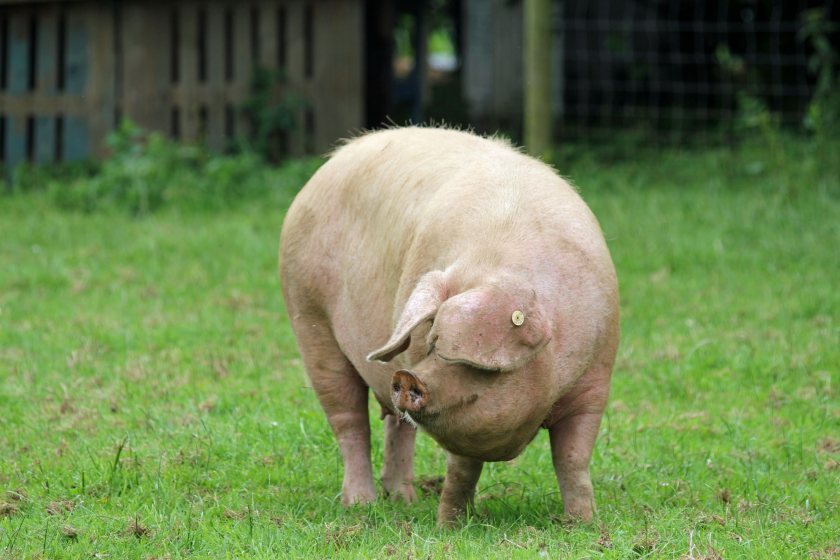
A first-of-its-kind study has identified unique genetic markers for the rare Lop pig breed, paving the way for action to boost numbers.
Originating in the West Country, the Lop is one of the rarest native breeds of pig in the United Kingdom.
A white pig with distinctive lop ears that touch the end of its nose, it produces high quality pork and bacon that is highly prized by butchers and chefs.
But the breed has suffered a significant decline in numbers, as did most of the UK's native breeds following the second world war.
The Lop is categorised as a 'priority breed' on the Rare Breeds Survival Trust's (RBST) Watchlist due to its low numbers and concerns about genetic diversity.
Now a major new genomic study, commissioned by the RBST and the British Lop Pig Society, has offered a glimmer of hope to campaigners hoping to save the breed from extinction.
They say the findings of the study pave the way for action to save the rare breed, as the data is more bespoke and scientifically informed than ever before.
This first ever identification of the genetic markers of the breed provides the basis for best animal selection for breeding programmes.
Hair samples were collected from 190 individual pigs raised in 40 farms, constituting a valid cross section of the current breeding population.
The samples were used by experts at Scotland’s Rural College (SRUC) to derive genome-wide genotypes for each pig.
RBST chief executive Christopher Price welcomed the study's findings, but warned that the Lop breed was in a 'perilous position'.
"This is a really important study for the work to ensure our other rare native breeds survive too, it is the first of its kind for any pig breed native to the UK.
"We hope it will set a template for how other rare breeds could access similar genetic data.”
Giles Eustice, who farms with Lop pigs at Trevaskis Farm in Cornwall, and is chairman of the Lop Pig Society, said the new genomic data was a 'fantastic boost' for the breed.
"We have a committed following of old and new breeders and I am confident with the new tools we have been given we can achieve the diversity goal required.
"I am interested in using the sequencing to explore some of the ‘Celtic’ white pigs in existence with much similarity to the British Lop; they could hold a diversity key that may be needed.’’
The genomic study is part of a five year project which began in 2019 as partnership between RBST and the British Lop Pig Society with major funding from the Gerald Fallowes Discretionary Trust.
Along with the genome study, the project is collecting embryos and semen to support the strength of the breed and to bank genetic material in preparation for a future crisis for the breed.
